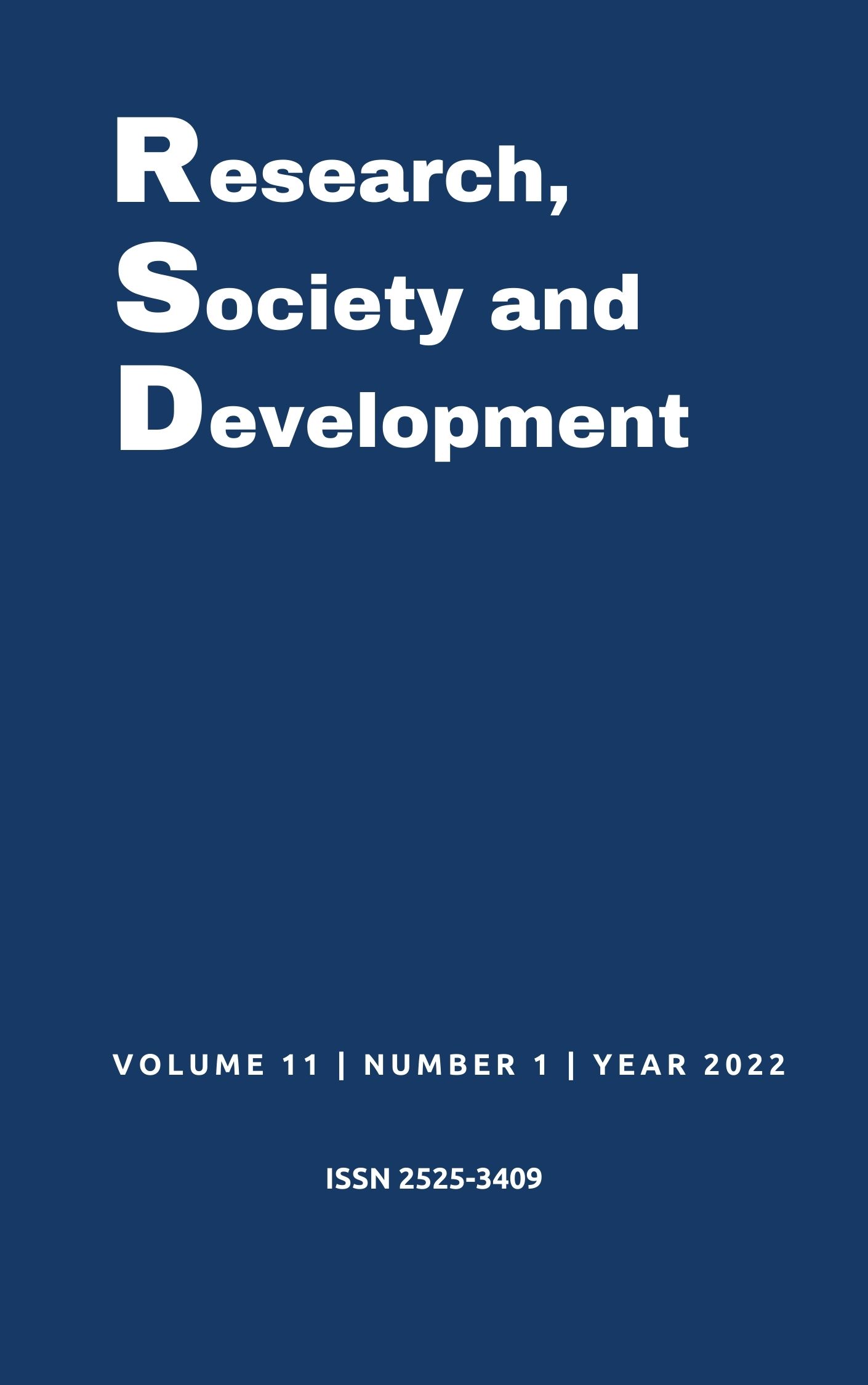Evaluation of biomass and lipid yield using different cultivation regimes in Scenedesmus sp.
DOI:
https://doi.org/10.33448/rsd-v11i1.24565Keywords:
Microalgae, Optimization, Production, Performance, Lipids, Biomass.Abstract
The search for renewable sources of biofuels is growing every day. As an example, we have biodiesel, a non-fossil fuel that can totally or partially replaces petroleum diesel without the need for adaptation. Microalgae can be used as raw material to produce biodiesel due to its growth rate and for having high lipid yields, in addition to its great capacity to develop in different environments. The use of microalgae to produce biofuels can be a potential and economical alternative in relation to other fuel sources. In addition to the high content of lipids and carbohydrates, they show rapid growth and high efficiency in fixing CO2. Thus, this work aimed to cultivate the microalgae Scenedesmus sp. in different regimes, analyzing the best conditions to produce bio-oil. The tests were carried out varying the culture medium, light, reactor, days of cultivation and aeration of the environment, totaling 16 tests. After carrying out the experiment was decided that the best microalgae cultivation regime aiming at a percentage of oil was using an inoculum of 20% of the useful volume in a horizontal reactor, with CHU culture medium and maximum light intensity with three “light” lamps how daylight, and duration of 30 days, with aeration and without vitamins addition. The associated effects of aeration, luminosity, cultivation time and growth medium, had a greater influence on the production of lipids.
References
Barros Neto, B.; Scarminio, I. S & Bruns, R. E. (2001). Como fazer experimentos: pesquisas e desenvolvimento na ciência e na indústria. Editora da Unicamp.
Benedito, V. M.; Porto, P. S. S. & Freitas, R. R. (2019). Modelagem do crescimento de microalgas: Um estudo bibliométrico. Research, Society and Development, 8 (1), e681511. https://doi.org/10.33448/rsd-v8i1.511
Borges, W. S. (2014). Produção de bio-óleo empregando microalgas em diferentes meios de cultivo. Tese (Doutorado em Engenharia Química: Programa de Pós-Graduação em Engenharia Química), Universidade Federal de Uberlândia, Uberlândia.
Cartas, L. C. (2018). Isolamento e cultivo de microalgas em resíduo líquido do processamento da mandioca: manipueira. Dissertação de Mestrado, Universidade Federal do Tocantins, Gurupi, TO, Brasil.
Chu, S. P. (1942). The influence of the mineral composition if the medium on the growth of planktonic algae. Journal of Ecology, 30 (2), 284-325. https://doi.org/10.2307/2256574
Dario, P. P.; Balmant, W.; Lírio, F. R.; Ramos, L. P.; Blanco, J. G.; Sugai, D. Y.; Vargas, J. V. C.; Santos, B. & Mariano, A. B. (2021). Lumped intracellular dynamics: Mathematical modeling of the microalgae Tetradesmus obliquus cultivation under mixotrophic conditions with glycerol. Algal Research. 57, 102344. https://doi.org/10.1016/j.algal.2021.102344
Folch, J.; Lees, M. & Stanley, G. H. S. (1957). A simple method for the isolation and purification of total de lipids from animal tissues. Journal of Biological Chemistry. 226, 497-509. https://doi.org/10.1016/S0021-9258(18)64849-5
Galina, D.; Benedito, V. M.; Freitas, R. R. & Porto, P. S. S. (2020). Análise da influência da temperatura e do tempo na transesterificação direta da Nannochloropsis Oculata para produção de biodiesel. Research, Society and Development, 9 (7), e655974648. https://doi.org/10.33448/rsd-v9i7.4648
Guillard R. R. L. (1975). Culture of Phytoplankton for Feeding Marine Invertebrates. In: Smith W.L., Chanley M.H. (eds) Culture of Marine Invertebrate Animals. Springer. https://doi.org/10.1007/978-1-4615-8714-9_3
Lima, K. F. F.; Porto, P. S. S. & Freitas, R. R. (2018). Métodos de extração de bio-óleo a partir da microalga Nannochloropsis oculata: uma análise bibliométrica. Research, Society and Development, 7 (6), e976190. https://doi.org/10.17648/rsd-v7i6.259
Oliveira, F. C. (2019). Otimização de produção de biomassa para extração lipídica utilizando estirpes da microalga Scenedesmus sp. Dissertação de Mestrado, Universidade Federal de Uberlândia, Uberlândia, MG, Brasil. https://repositorio.ufu.br/handle/123456789/27314
Silva, G. C.; Santos, A. J. F.; Bredda, E. H. & Da Rós, P. C. M. (2019). Otimização das condições de cultivo da microalga Nannochloropsis gaditana e caracterização do óleo obtido. Brazilian Journal of Development, 4 (6), 2730-2749. https://doi.org/10.34117/bjdv5n6-1672
Vieira, A. T.; Assunção, R. M. N. & Faria, A. M. (2018). Stationary phase based on cellulose dodecanoate physically immobilized on silica particles for high-performance liquid chromatography. Journal of Chromatography A, 1572, 72-81. https://doi.org/10.1016/j.chroma.2018.08.048
Downloads
Published
Issue
Section
License
Copyright (c) 2022 Witter Duarte Guerra; Flávia Costa Oliveira; Jaqueline Elise Garcia Chiesa; Isabela de Souza Dias; Andressa Tironi Vieira; Wesley da Silva Borges; Alexandre Sylvio Vieira da Costa; Anízio Marcio de Faria; Antônio Carlos Ferreira Batista

This work is licensed under a Creative Commons Attribution 4.0 International License.
Authors who publish with this journal agree to the following terms:
1) Authors retain copyright and grant the journal right of first publication with the work simultaneously licensed under a Creative Commons Attribution License that allows others to share the work with an acknowledgement of the work's authorship and initial publication in this journal.
2) Authors are able to enter into separate, additional contractual arrangements for the non-exclusive distribution of the journal's published version of the work (e.g., post it to an institutional repository or publish it in a book), with an acknowledgement of its initial publication in this journal.
3) Authors are permitted and encouraged to post their work online (e.g., in institutional repositories or on their website) prior to and during the submission process, as it can lead to productive exchanges, as well as earlier and greater citation of published work.


